One of the best things about South Korea is it’s a land filled with a rich cultural heritage. While these cultural gems form the heart of a list of famous landmarks in South Korea, the country has seen simultaneous cultural emergence and tremendous growth in its technological industries in recent years. Famed the world over for the influence of K-Pop, Korean skincare and beauty, South Korea is becoming more and more influential over the west. There are so many spectacular natural landmarks in South Korea, such as the Sobaek Mountains, volcanic islands off its coast, breathtaking valleys, and stunning waterfalls. Here are 20 famous, natural and historical landmarks in South Korea you cannot miss when visiting.
Contents
20 Landmarks in South Korea
Top Tours and Tickets

- Seoul: Royal Palace Afternoon Tour including Changdeokgung – this tour is very popular so book now!
- Morning 3-Hour Intro to Seoul Tour (Palace, Temple & More) – a great introduction to South Korea’s royal past.
- South Korea Demilitarized Zone Half & Full Day Tour – discover an incredibly unique situation between the North and the South.
Famous Landmarks in South Korea
1- Gyeongbokgung Palace
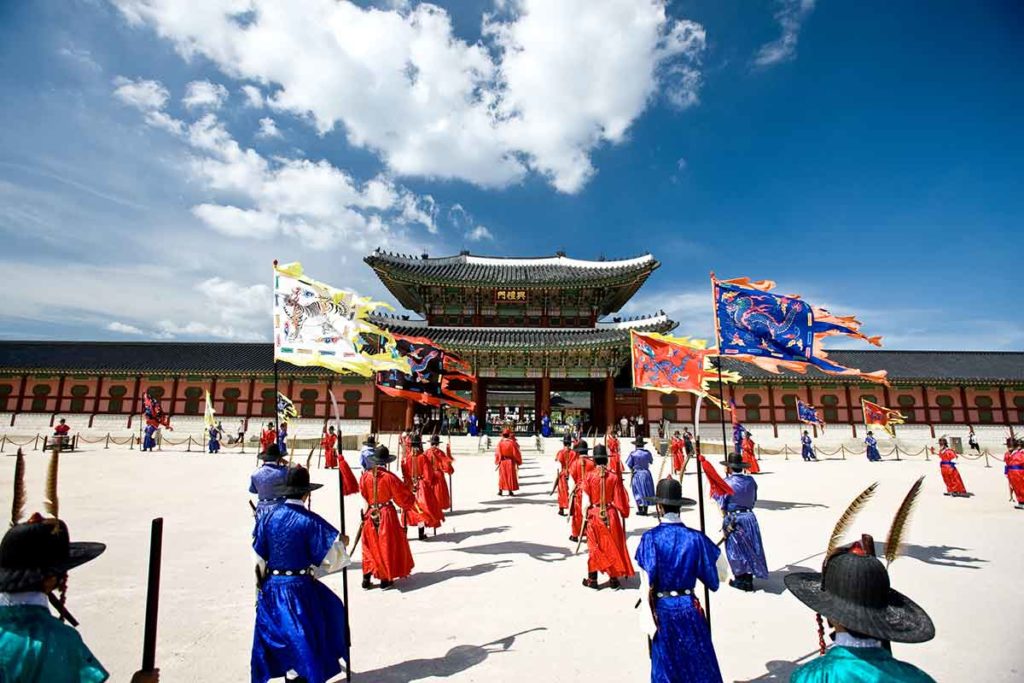
Once destroyed by a fire during the Imjin War of 1592 to 1598, Gyeongbokgung Palace has been heralded by many as being the most beautiful of the five palaces.
The palace, the largest of the five in South Korea, was built in 1395 and is often referred to as the Northern Palace due to its location.
Much of the palace has remained intact over the centuries, and in particular, the Gyeonghoeru Pavillion and the pond around Hyangwonjeong Pavillion are amongst the best-preserved areas.
When visiting the palace, wear a traditional Korean hanbok for free entry, or hire one when you arrive.
Within the palace grounds are the National Palace Museum of Korea and the National Folk Museum.
Visiting this palace is one of the things to do in Seoul you shouldn’t miss and it’s worth joining a walking tour of the palace to learn more about it’s history.
Recommended tours:
2- DMZ
The Korean Demilitarised Zone, or DMZ, is on the border of South Korea and North Korea.
The line of the DMZ follows the demarcation line, which dates back to the end of World War II.
As the DMZ is a ceasefire line, North and South Korea have armed and fortified their areas to the north and south, making it the most heavily armed border in the world.
Visits to the DMZ are allowed and often include the Third Tunnel, where you can walk across to North Korea underground and Imjangik Park.
It’s a stark reminder of how different life in North Korea is from counterparts in the south. Find out more about touring the DMZ.
The park is part of the border and is frequented by South Korean residents who still have family or have lost loved ones in the North.
3- N-Seoul Tower
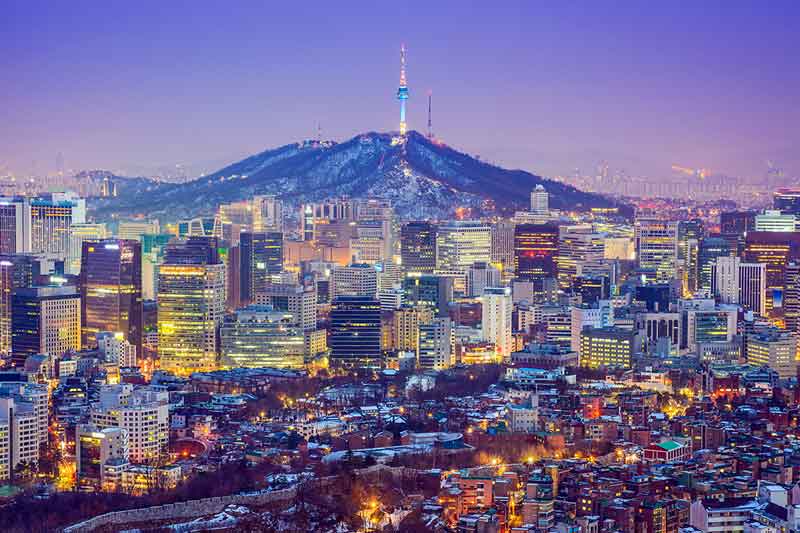
Another famous landmark in South Korea is the N-Seoul Tower, a cultural space in Seoul that sits atop the highest point in the city.
The tower was opened to the public in 1980 and is fitted with LED technology to allow it to light up and produce spectacular lighting shows when it gets dark.
360-degree panoramic views across Seoul are visible from the top of the tower.
Inside the tower are interactive art exhibitions, an observatory and restaurants. Book a half or full-day private tour to see N-Seoul Tower and other sights.
While in Seoul, save money by pre-booking these passes and travel cards:
- Seoul: Go City Explorer Pass – Visit 3 to 7 Attractions
- Seoul City Pass & Transportation Card with 100+ Attractions
- Incheon Airport: Traveler SIM & T-money Transportation Card
4- Incheon Tri-Bowl
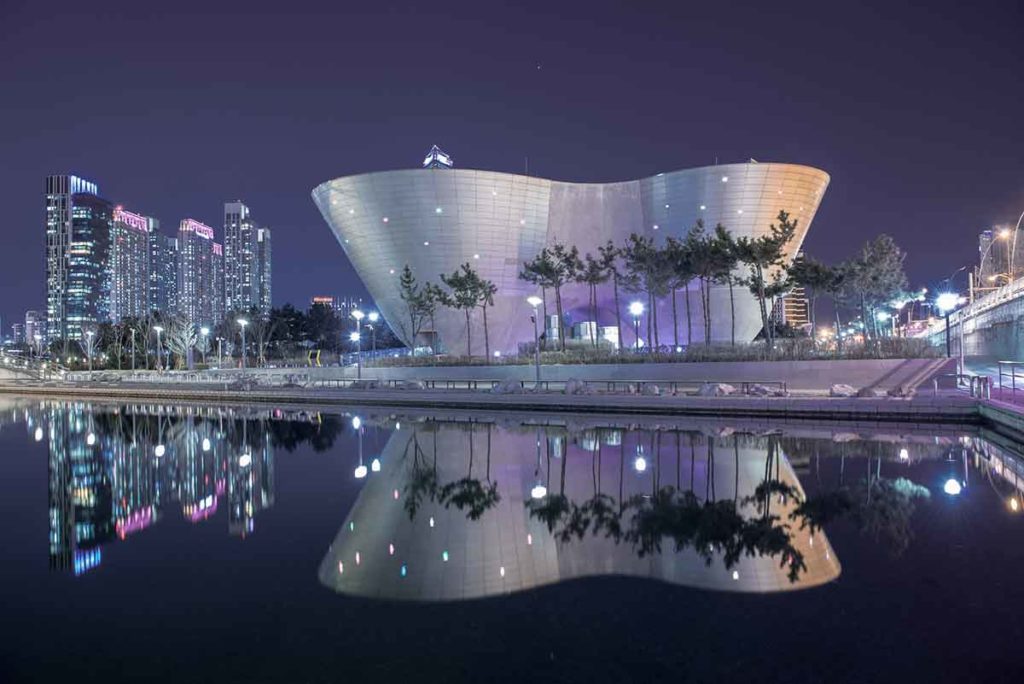
A multi-complex cultural and arts centre, the Incheon Tri-Bowl is a must-visit landmark in South Korea.
The unusual architecture of the building and its surrounding pool makes it appear that the complex is floating on water.
The complex rebels against traditional architecture with a curved floor and flat roof.
The wide and vast ceiling inside makes the Tri-Bowl a perfect exhibition location.
Also, thousands of LED lights inside the complex create patterns on the ceilings and walls.
Underneath the building is a walkway over the water, offering unusual views.
Externally, the Tri-Bowl lights up at night, with lighting shows across its surface and over the water it sits atop. If you’re unsure how to get around, book a private tour and learn from the locals.
5- Lotte World
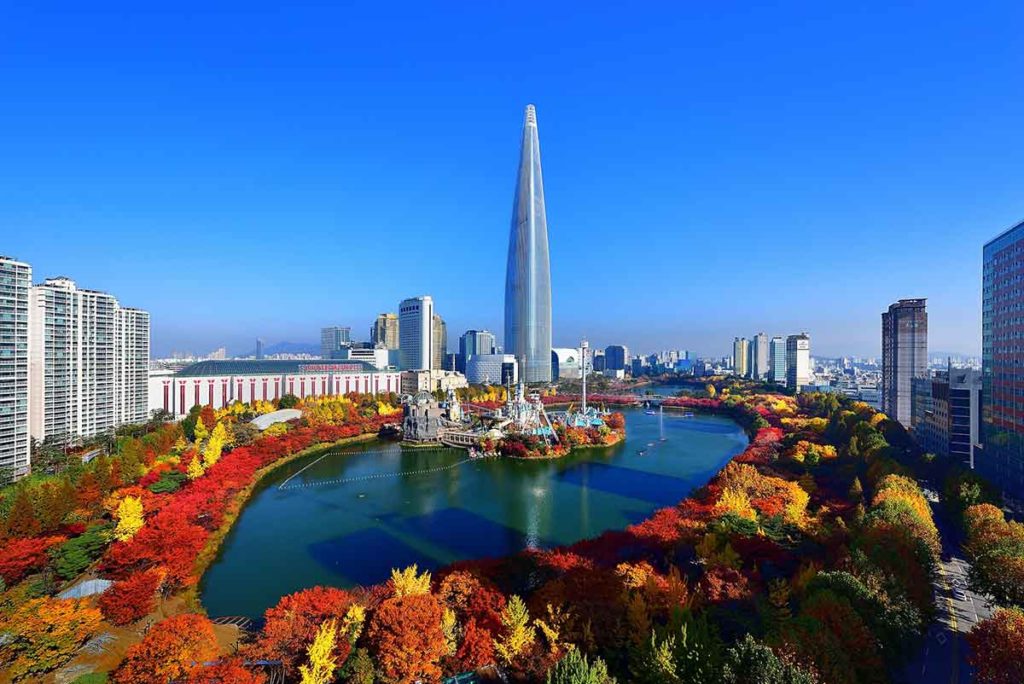
In Seoul’s Songpa District is Lotte World, an entertainment complex and theme park in South Korea.
If you’re visiting with the family, spending some time in Lotte World is one of the things to do in South Korea to tick off your list.
The park opened in 1989 and is made up of two theme parks; Lotte World Adventure and Magic Island.
Lotte World Adventure is divided into countries, with attractions linking to each.
Often nicknamed ‘South Korea’s Disneyland’ by visitors, the park even has its own daily parade and regular evening light parades.
Magic Island is Lotte World’s water-themed park and features an aquarium, while Seokchonhosu Lake surrounds Magic Island.
To take a break from the rides, head to Lotte World Folk Museum, which features displays from South Korea’s history, and several model villages.
6- The ARC-River Culture Multimedia Theater Pavilion
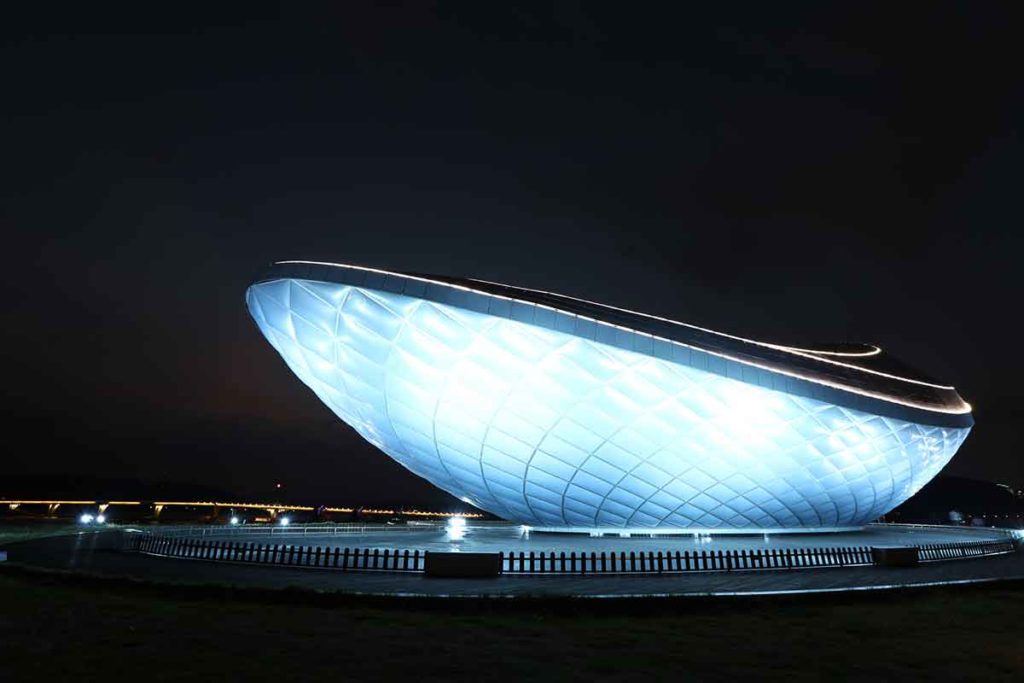
The ARC is a theatre complex in Daegu and an incredible statement of architecture combined with nature, space and technology.
This unusual must-see landmark is perched atop a hill with spectacular views over the city and the surrounding mountains.
The vessel-shaped building is clad in silvery pillow-shaped panels that add to the structure’s unusual geometry.
Like many architectural marvels in South Korea, the ARC is surrounded by a pool of water, creating stunning reflections around the base.
Head to the roof for another reflective pool, casting the sky across its surface for incredible views over the natural landscape. If you’re not sure of how to get around, book a private tour and learn from the locals.
If you’re looking for unusual things to do in Seoul, try these tours:
- Seoul: Dark Side of the City and Ghost Stories Walking Tour
- Seoul: Myeongdong Nanta Theater Show Ticket
7- Byeongbangchi Skywalk
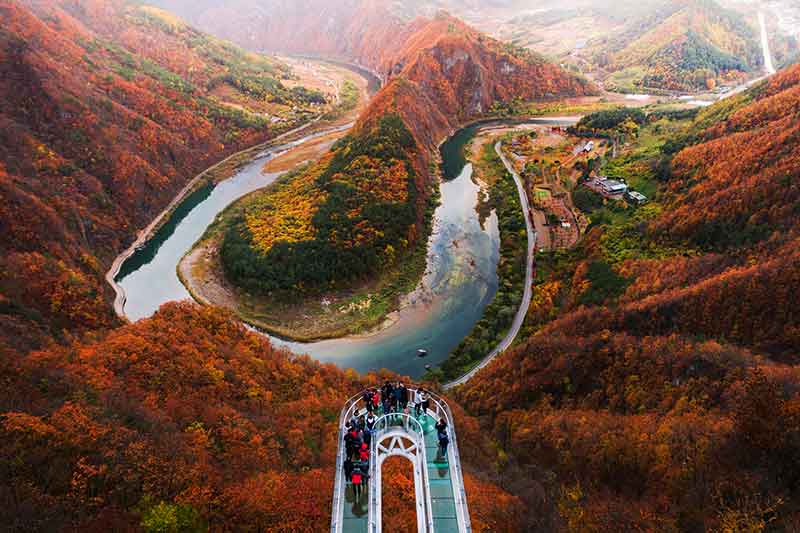
The Byeongbangchi Skywalk is a ‘U’ shaped bridge protruding out from a cliff over the Donggang River.
The skywalk is in Jeongseon-eup, and offers visitors spectacular views over Bamseom and the Donggang River.
It’s 583 meters above the ground and features a glass floor adding to the range of views available and is fitted with the longest zip-wire in Asia, a must for thrill-seeking tourists.
8- Incheon Bridge
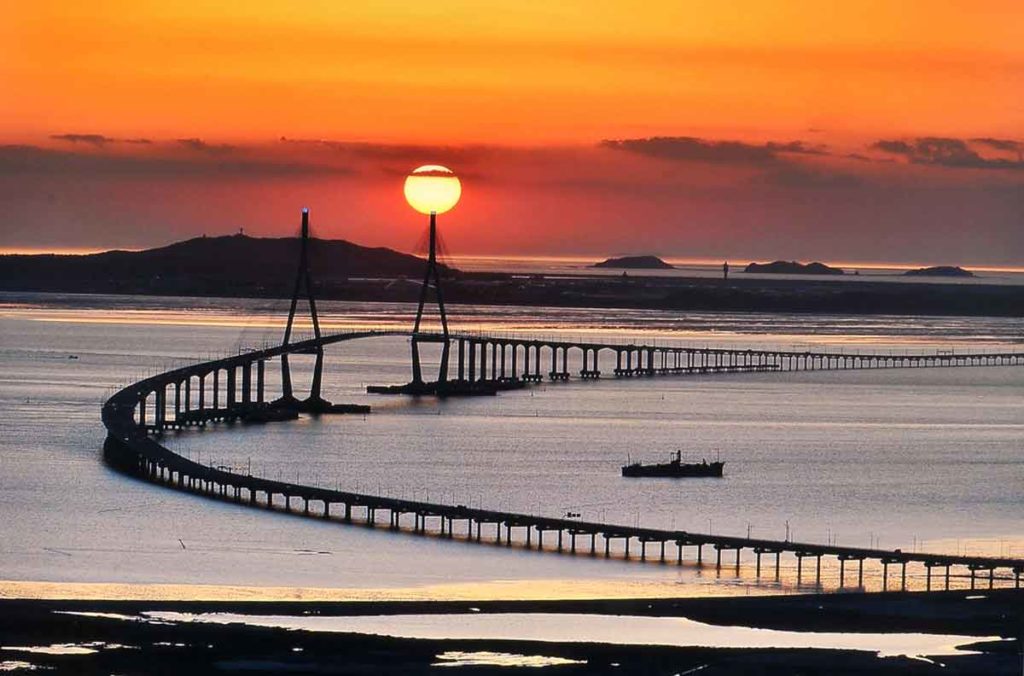
The Incheon Bridge is 12.3 kilometres long and stretches across the Yellow Sea, linking Incheon International Airport to New Songdo City.
The cable-stayed element of the bridge is South Korea’s longest cable-stayed bridge at 800 meters long.
The bridge opened in 2009, taking four years and four months to build.
As the region the bridge sits in is seismically active, the bridge was designed to ensure that it could withstand the activity and avoid collapse.
More Landmarks in Asia:
Natural Landmarks in South Korea
9- Jeongbang Waterfall
One of three major waterfalls on Jejudo Island, Jeongbang Waterfall falls directly into the sea and is the only waterfall in South Korea to do so.
The waterfall is 23 m high and formed of two water streams falling over a black cliff face.
The cliff is topped with pine trees, making the falls an incredible sight.
Legend has it that a man named Seobul landed on Jejudo Island in search of an elixir plant at the orders of China’s Qin Shu Huangdi.
When he could not find the plant, he resigned to head back to China, but not before falling in love with Jeongbang Falls.
He carved “Seobulgwacha” into the cliff, as a memory of his journey but to this day, this carving is yet to be discovered.
Recommended tour: Jeju Island: Full-Day Customizable Private Guided Car Tour
10- Seongsan Ilchulbong Peak
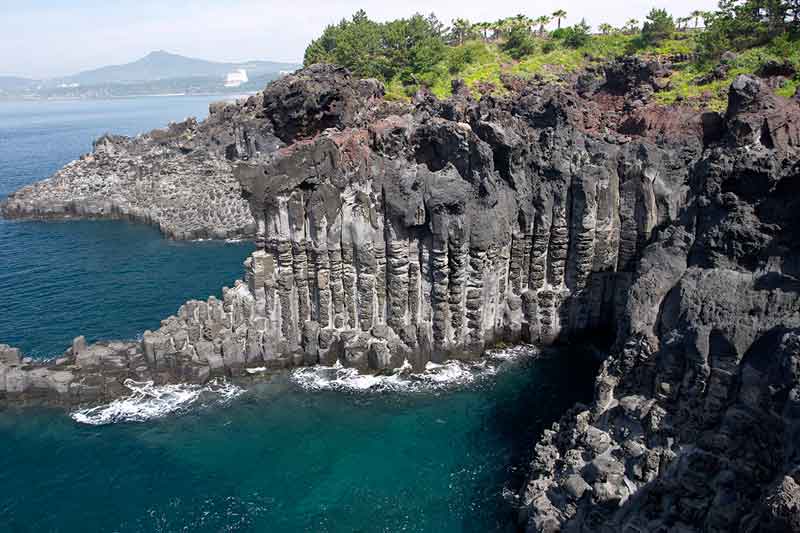
A UNESCO World Heritage Site, Seongsan Ilchulbong Peak, or Sunrise Peak, is one of the most famous natural landmarks in South Korea.
The peak is a tuff cone crater formed around 5000 years ago when a volcano below the sea erupted.
The landscape surrounding the peak is rocky and jagged due to the volcanic eruption.
The views from the eastern side of the peak of the sunrise are said to be the best on the island and hiking to the top is one of the things to do on Jeju Island not to be missed.
A sunrise festival has been held at the Seongsan Ilchulbong since 1994 and runs from New Year’s Eve to New Year, where fishermen light up the ocean and their boats with lights and sound to welcome in the New Year. Many group tours on Jeju Island will take you to this natural wonder. Check this tour out.
11- Hwaam Cave
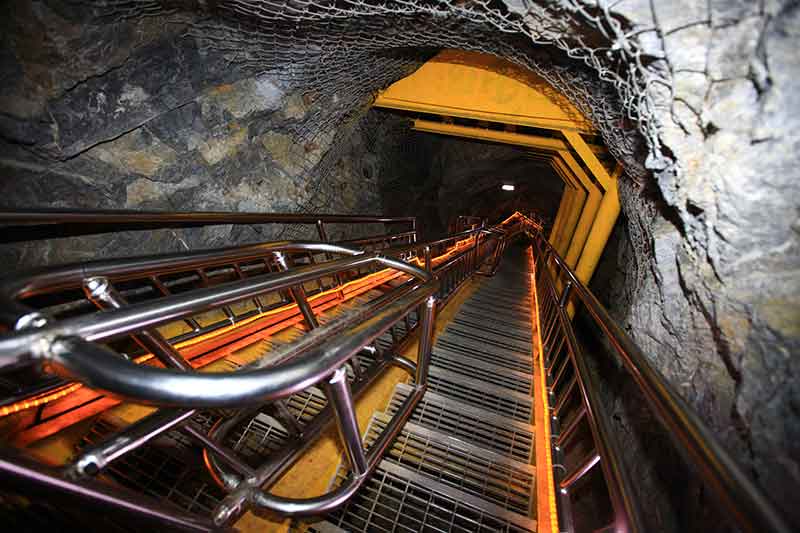
One of South Korea’s more unusual natural landmarks is Hwaam Cave, formerly a gold mine, it’s the largest limestone cave in Asia.
Within the cave, the old mining tunnels are open to the public, with tours of the tunnels and a mining museum available.
Visitors descend on a monorail to enter the cave before heading through caves and tunnels with several historical scenes presented.
Visitors are encouraged to take a ‘piece of the cave’ through carefully positioned pneumatic drills.
Within the cave are several fantasy creatures in an area known as “Golden Fantasy”, where goblins and fairies tell the story of the gold mine.
12- Dalmasan Mountain
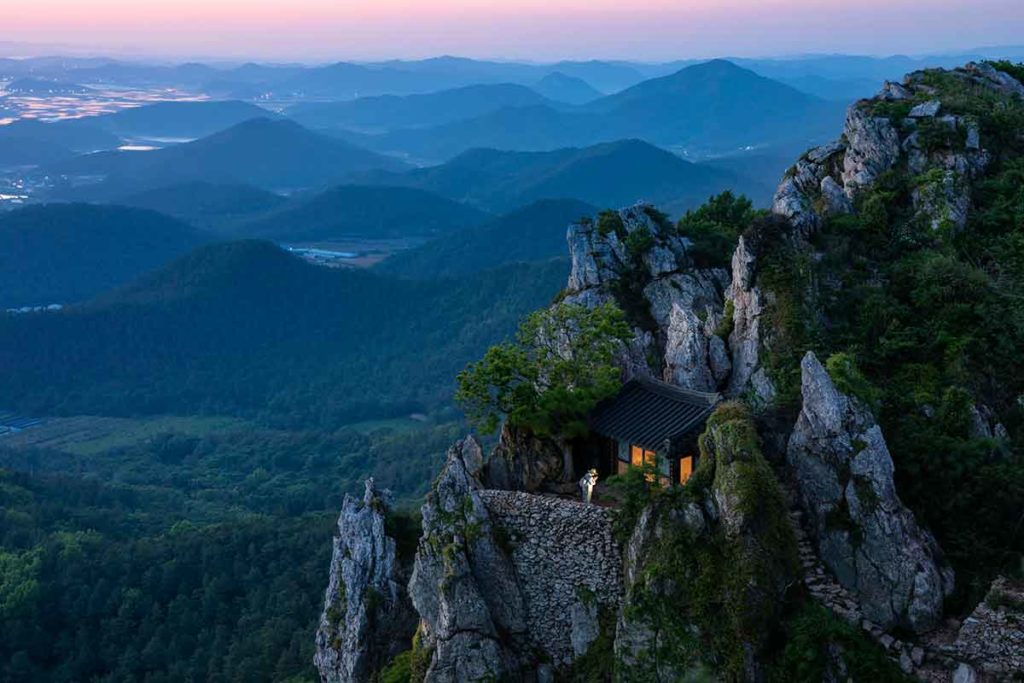
Forming part of the Taebaek mountain range, Dalmasan Mountain is in Haenam County is 489 m high.
From the peak of Dalmasan, views over ‘Lands Edge’, the southernmost point of the Korean peninsula and its outlying islands, can be seen.
Many temples are on the mountain, with Mihwangsa temple being the most frequented by locals and tourists.
Mihwangsa temple was built in the Silla Dynasty in 749 and is on the west of the mountain.
The temple is adorned with carvings of sea creatures, including sea turtles and crabs, an unusual feature of temples but ones appropriate to its location.
13- Maisan Provincial Park
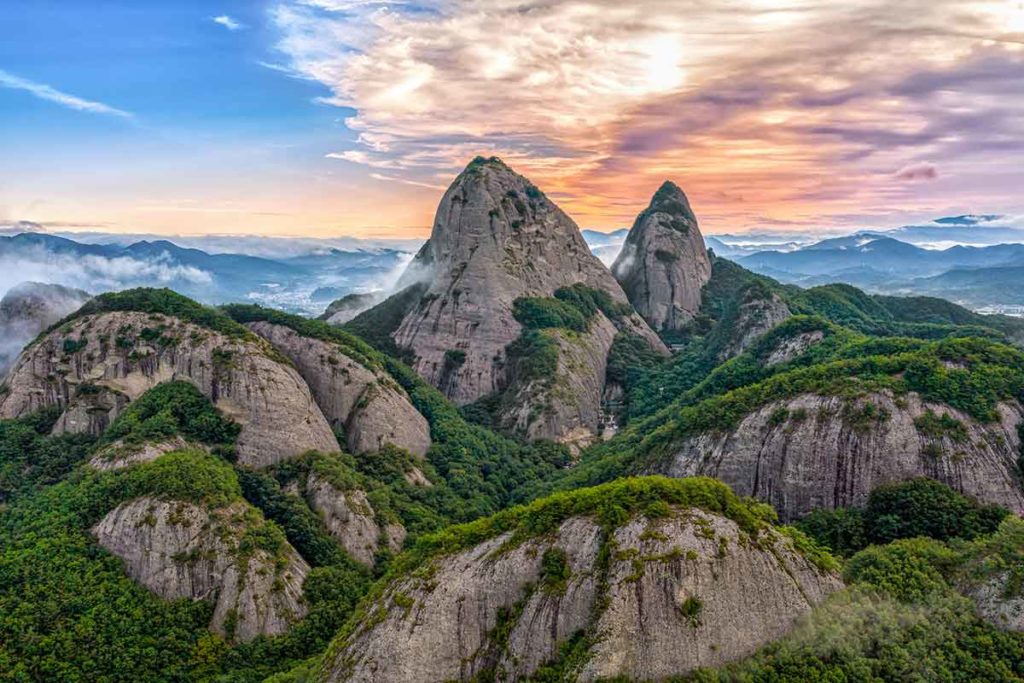
Translating to ‘Horse Ears Mountain’, Maisan Provincial Park is a must-visit natural landmark in South Korea.
The name ‘Horse Ears Mountain’ comes from the appearance of two rocky peaks viewed from the town of Jinan.
The ears of the peaks are made from a conglomerate rock which is very rare in South Korea.
Within the park is the temple of Tap-sa, which sits at the base of the female ear.
The temple grounds are filled with 80 stone towers piled up by Buddhist mystic Yi Kapmyong.
14- Seon-bawi rock
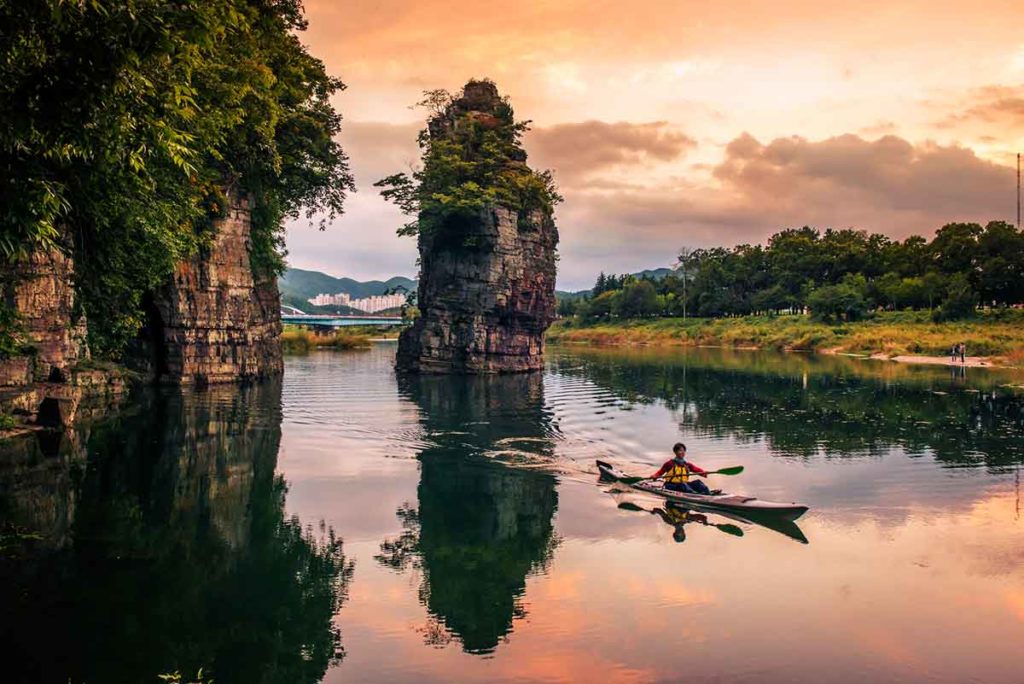
The Seon-bawi rocks, sometimes called ‘immortal rocks’ or ‘meditation rocks’ are among the world’s most-worshipped stone altars in the world.
Seon-bawi is on Inwang-san, South Korea’s holiest mountain.
The stones were formed from a volcanic eruption thousands of years ago, and due to their exposure to the weather, they have been eroded into unusual shapes and patterns.
The two rocks are often interpreted as human-like forms.
Buddhists interpret this as two monks protecting Seoul and sitting in contemplation.
15- Mount Seoraksan
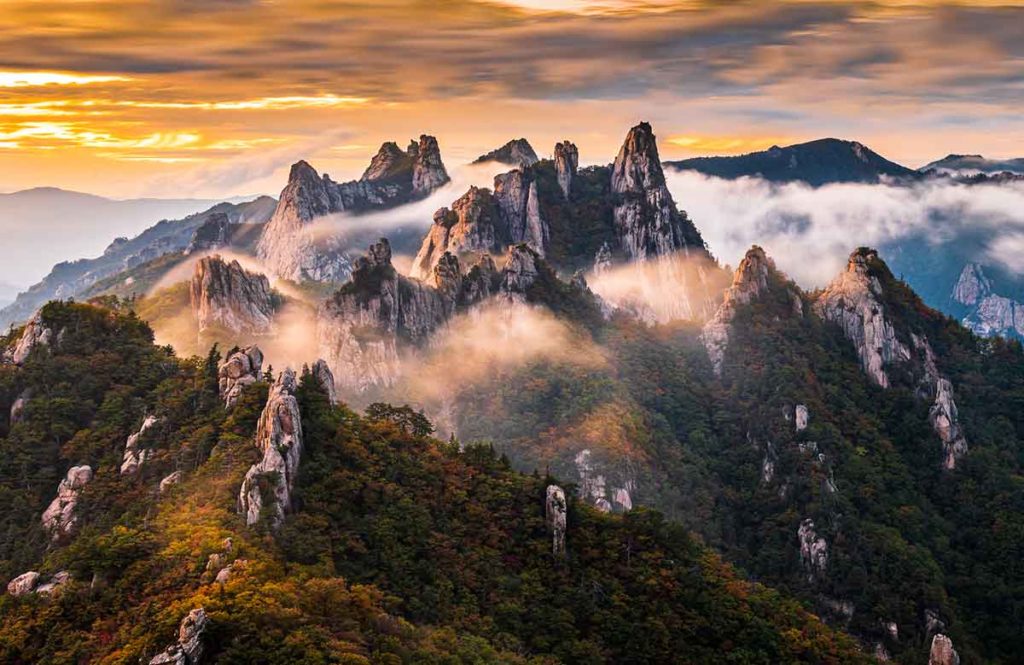
Mount Hallasan on Jeju Island may be the tallest and Mount Jirisan in Jirisan National Park might be one of the most sacred but a natural landmark in South Korea not to miss is Mount Seoraksan, which reaches an altitude of 1708 m and is one of the most beautiful mountains in South Korea.
This is due to the vivid and colourful flowers that cover the mountain in spring, the crystal-clear streams in summer, crisp autumnal leaves in fall and snow-capped peaks in winter.
The mountain has several waterfalls, including large falls such as Biryongpokpo and Oryeonpokpo.
The area is also filled with many unusual rock formations eroded by the falls and weather over the centuries.
Take a hike along one of the mountain’s many trails to make the most of the scenery.
Recommended tour: From Seoul: Mt Seorak Hike with Naksansa Temple or Nami Island
For more amazing European Landmarks, read:
- 30 Spain Landmarks
- 20 Switzerland Landmarks
- 22 Germany Landmarks
- 35 London Landmarks
- 30 France Landmarks
- 20 Italy Landmarks
- 20 Greece Landmarks
- 20 Russia Landmarks
- 20 Scotland Landmarks
- 20 Ireland Landmarks
- 21 Wales Landmarks
- 20 Turkey Landmarks
- 20 England Landmarks
- 20 Hungary Landmarks
- 21 Romania Landmarks
- 20 Ukraine Landmarks
- 20 Athens Landmarks
- 20 Rome Landmarks
- 20 England Landmarks
- 20 Portugal Landmarks
- 20 Poland Landmarks
- 20 Iceland Landmarks
- 20 Bulgaria Landmarks
- 21 Croatia Landmarks
- 20 Bulgaria Landmarks
- 20 Austria Landmarks
- 21 Finland Landmarks
- 20 Sweden Landmarks
- 20 Denmark Landmarks
- 20 Belgium Landmarks
- 20 Netherlands Landmarks
- 20 Barcelona Landmarks
- 21 Czech Republic Landmarks
- 20 Landmarks in Paris
- 20 Landmarks in Liverpool
- 10 Istanbul Landmarks
Historical Landmarks in South Korea
16- Bukchon Hanok Village
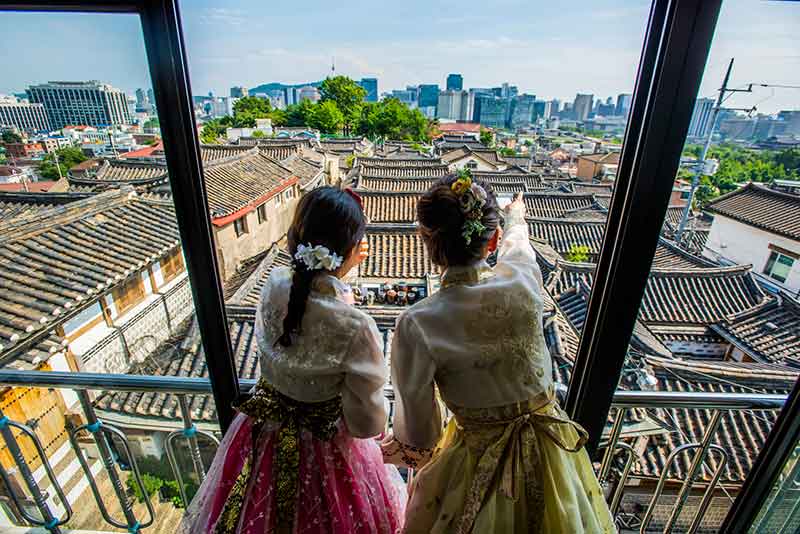
Translating to ‘northern village’, Bukchon Hanok Village is in the north of Seoul.
The village is filled with traditional hanok houses which date back to the Joseon dynasty.
The houses are mainly used as restaurants, cultural centres and museums, however, some are still occupied.
The village is filled with incredible examples of traditional Korean architecture and structures, which are perfect to explore at a leisurely pace.
Walking tours are offered by local guides which will take in the village and its hanoks, as well as cultural centres, museums and shops.
17- Changdeokgung Palace
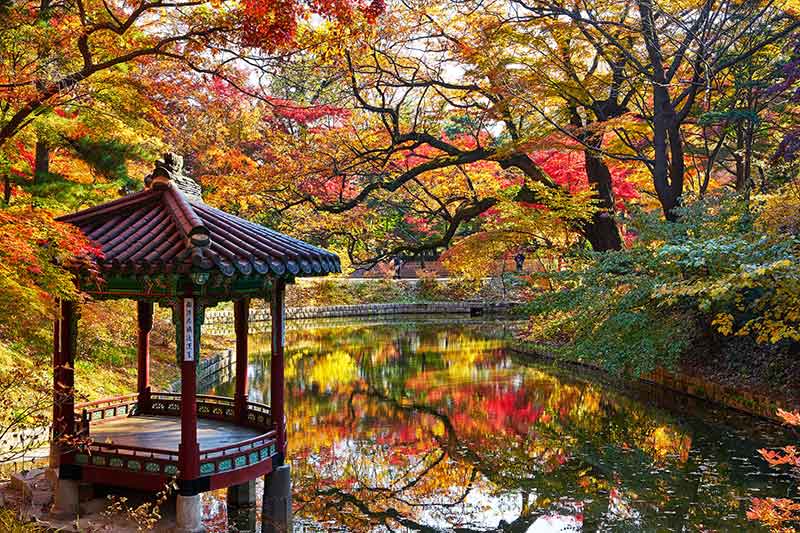
Changdeokgung Palace was the second royal palace built during the Joseon dynasty and remains the best preserved.
The palace was initially used as a residence for Seongjong, the 9th king of the dynasty.
Sadly, the palace was burnt to the ground by angry local citizens in 1592 during the Japanese invasion and, thankfully, restored in 1611.
Unusually for a palace garden, Changdeokgung Palace has a secret garden that is mostly left wild and is only touched by human hands when absolutely necessary.
Within this garden is a tree that is more than 300 years old.
Recommended tour: Morning 3-Hour Intro to Seoul Tour (Palace, Temple and More)
18- Andong Hahoe Folk Village
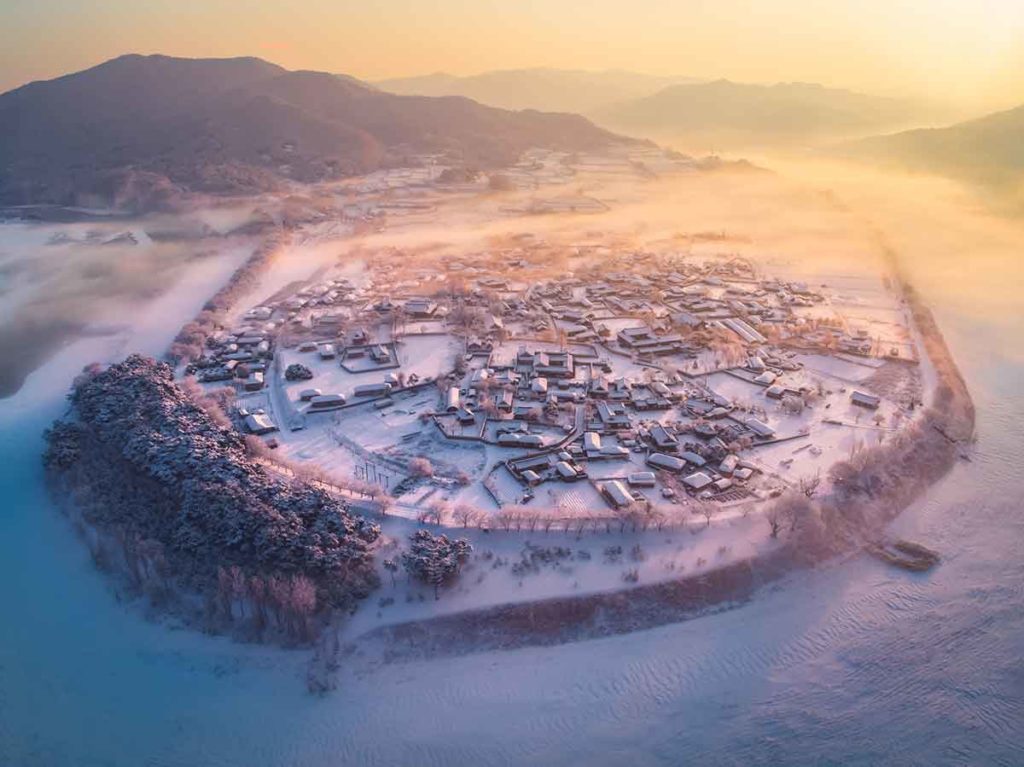
Famed for its traditional houses, the birthplace of renowned Korean scholars such as Gyeomam Ryu Un-ryong and once visited by Queen Elizabeth of England in 1999, Andong Hahoe Folk Village is a treasure of South Korea’s history.
The village is built around the Nakdonggang River, overlooked by Buyongdae Cliff, and surrounded by miles of beaches and towering pine trees.
The village is still occupied, however, visitors are welcomed with local delicacies such as Heotjesabap, bibimbap often eaten by nobles and Andong Guksu, a noodle dish.
A vibrant time to visit is during the Andong Mask Dance Festival when history comes alive with dances, folklore, storytelling and food stalls.
19- Cheonmachong
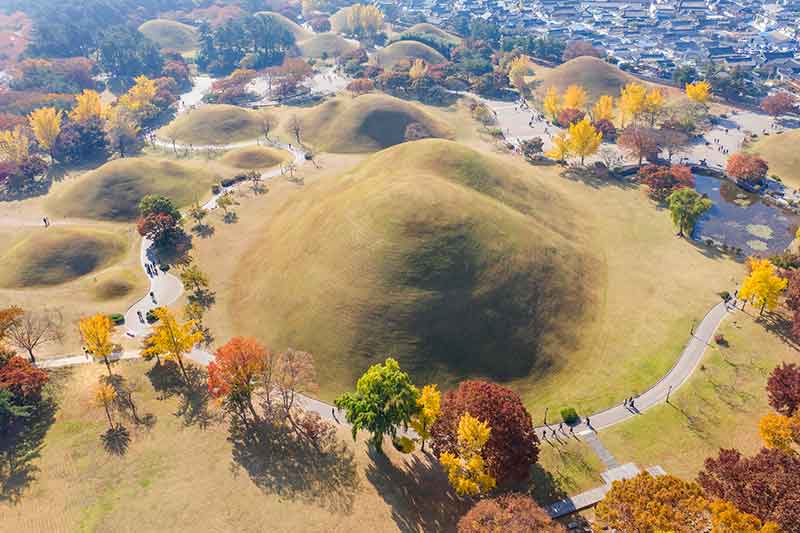
One of the things to do in Gyeongju is to explore the ancient tombs of Daereungwon.
Of all the tombs, Cheonmachong is an ancient tomb from the Silla kingdom, dating back to the 5th to 6th centuries.
The royal tomb is often called the ‘Heavenly Horse Tomb’ due to the artwork of an ethereal horse painted inside.
The tomb was excavated in 1973, where archaeologists uncovered more than 140 treasures, including gold crowns, blue glass tableware, and mounds of gold.
As the tomb has no inscription plaques, or written evidence of who was buried here, the tomb’s occupant remains a mystery, however, the presence of a crown amongst the treasures suggests it could belong to a king of the Silla kingdom.
Recommended tour: From Busan: Gyeongju UNESCO World Heritage One Day Tour
20- Naksansa Temple
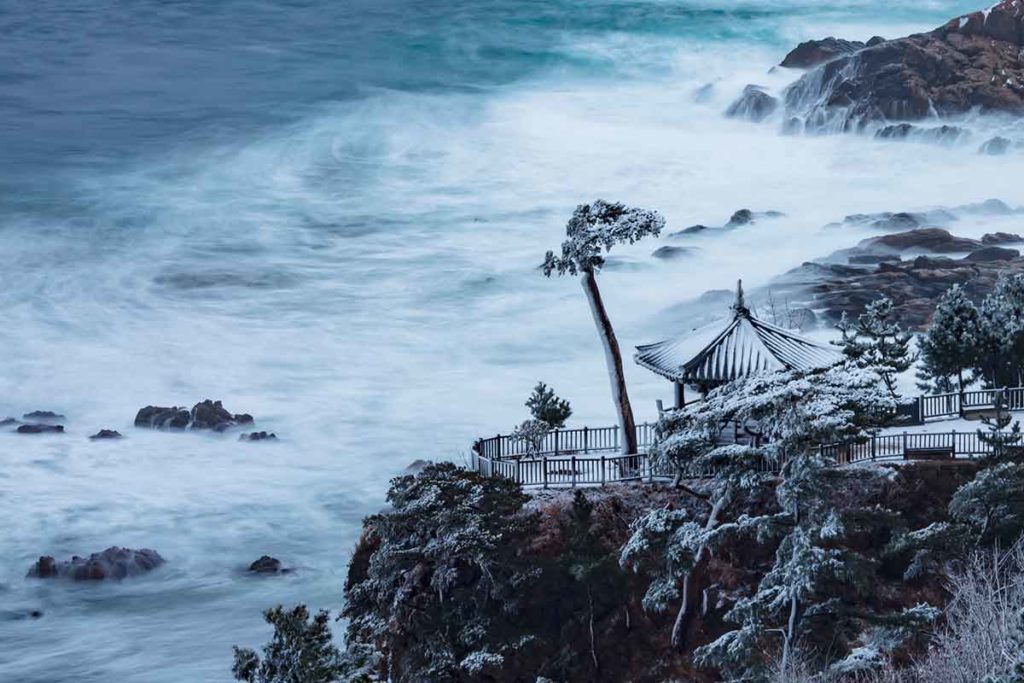
The temple on Mount Obong, Naksansa, is a must-visit historical landmark in South Korea.
Naksansa temple has more than 1300 years of history and has seen many Buddhists visit and live here.
From the temple, views over the East Sea can be seen and within the temple are many treasures and shrines.
One of the most famous treasures is the Geonchil Gwaneumbosal Seated Statue, which is believed to date back to early in the Joseon dynasty.
The temple was burnt to the ground during a forest fire in 2005, however, is undergoing gradual reconstruction.
To learn more about culture, tick a temple stay in Korea off your to-do list.
- 20 Famous Landmarks in South Korea
- 20 Things To Do In South Korea
- 20 Best Beaches In South Korea
- 35 Things To Do in Seoul
- 20 Seoul Day Trips
- 20 Things To Do In Jeju Island
- 10 Things To Do In Gyeongju
- Andong Mask Dance Festival
- Jirisan National Park
- Korean Temple Stay Experience
- Seoul At Night
- 20 South Korean Cities
- Winter In Korea – 20 Things To Do
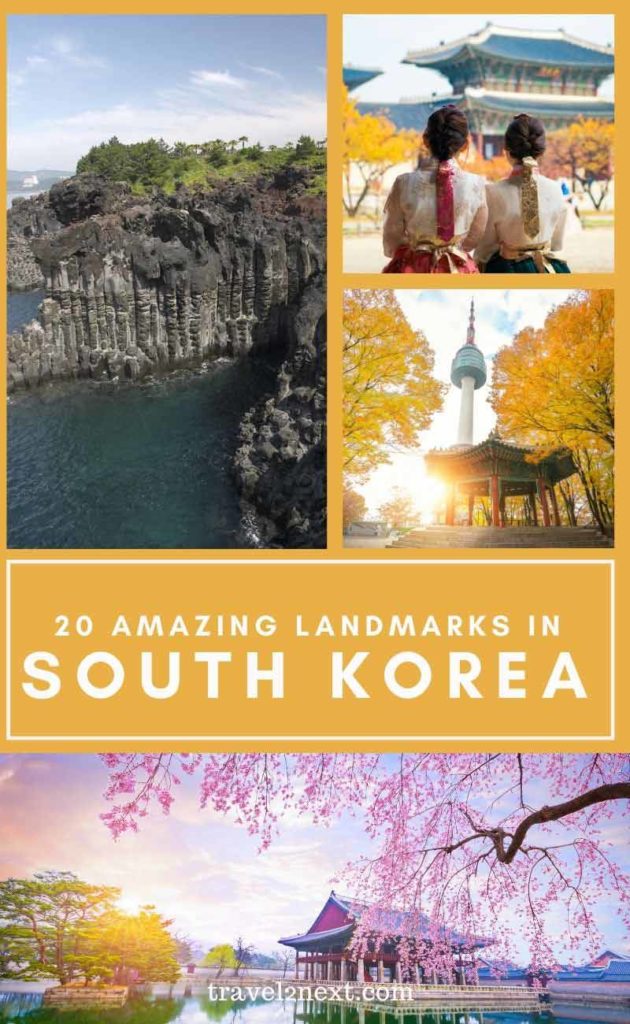
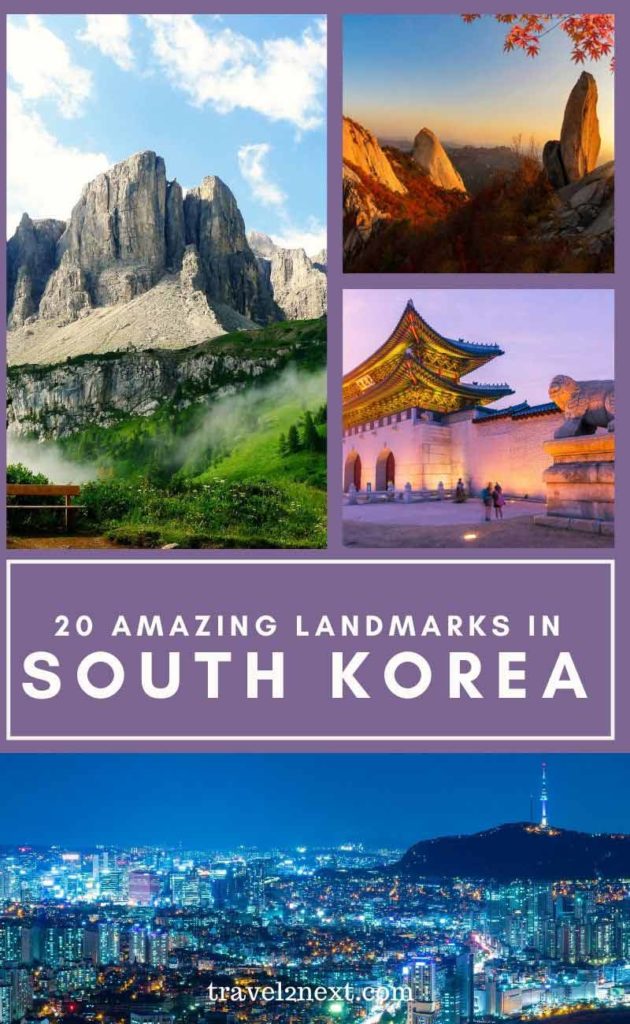
Plan Your Trip

Rent A Car – Find the best car rental rates at Discover Cars. They compare car hire companies to provide you with the best deal right now.

Find A Hotel – If you’re curious about this article and are looking for somewhere to stay, take a look at these amazing hotels.

